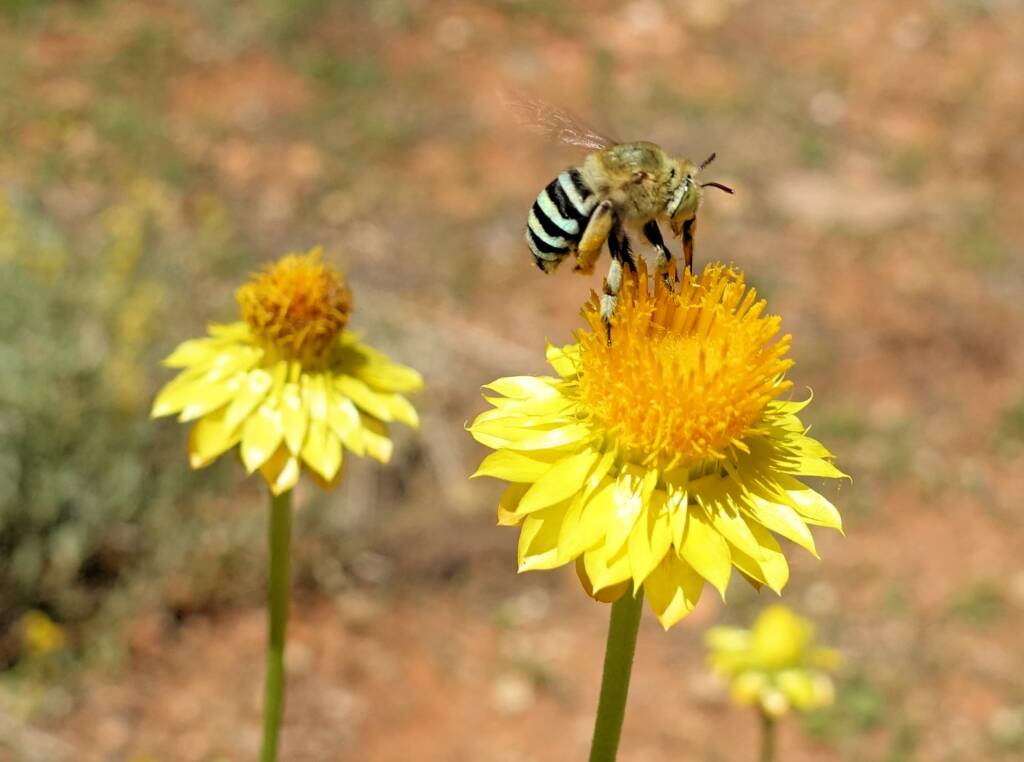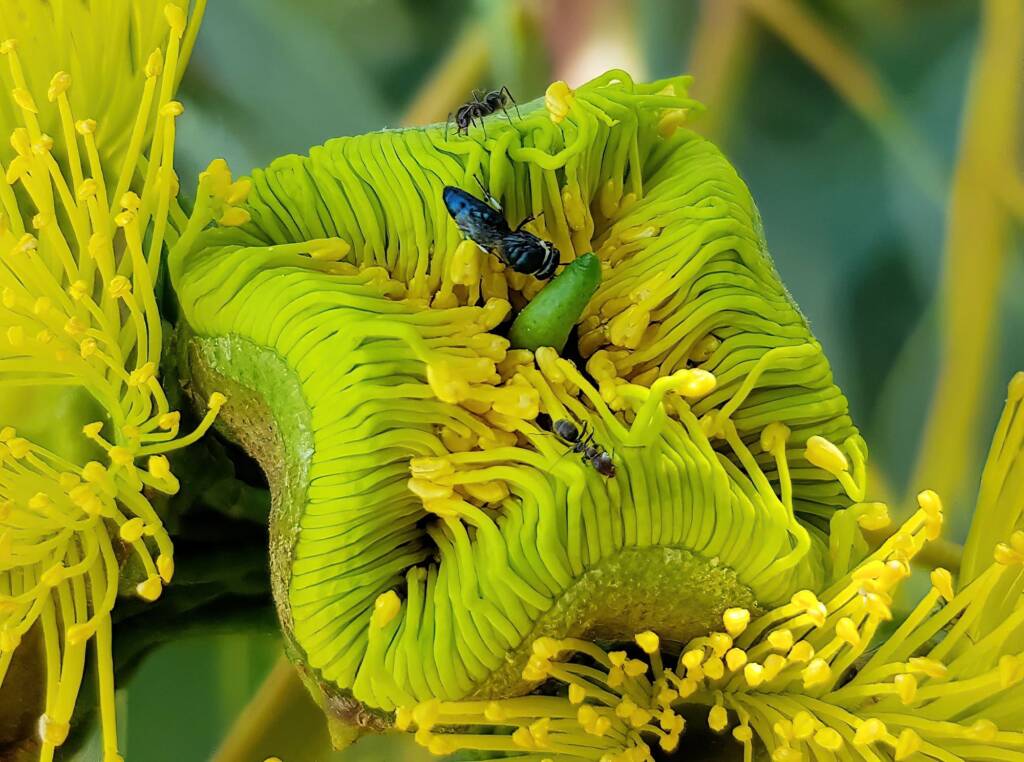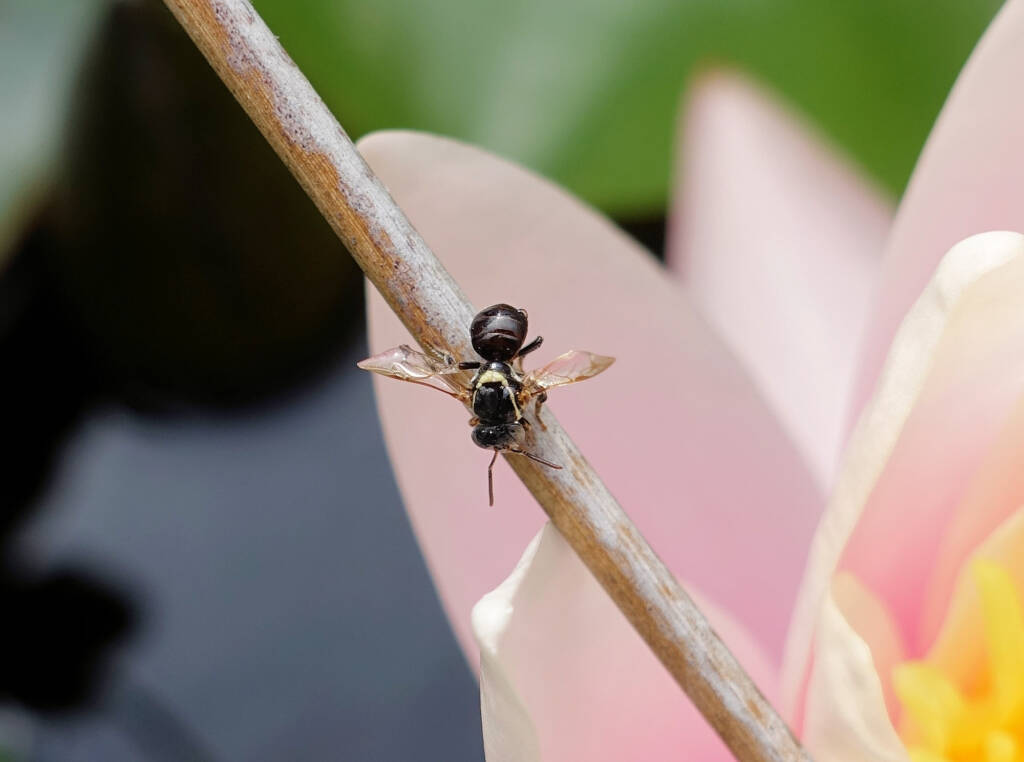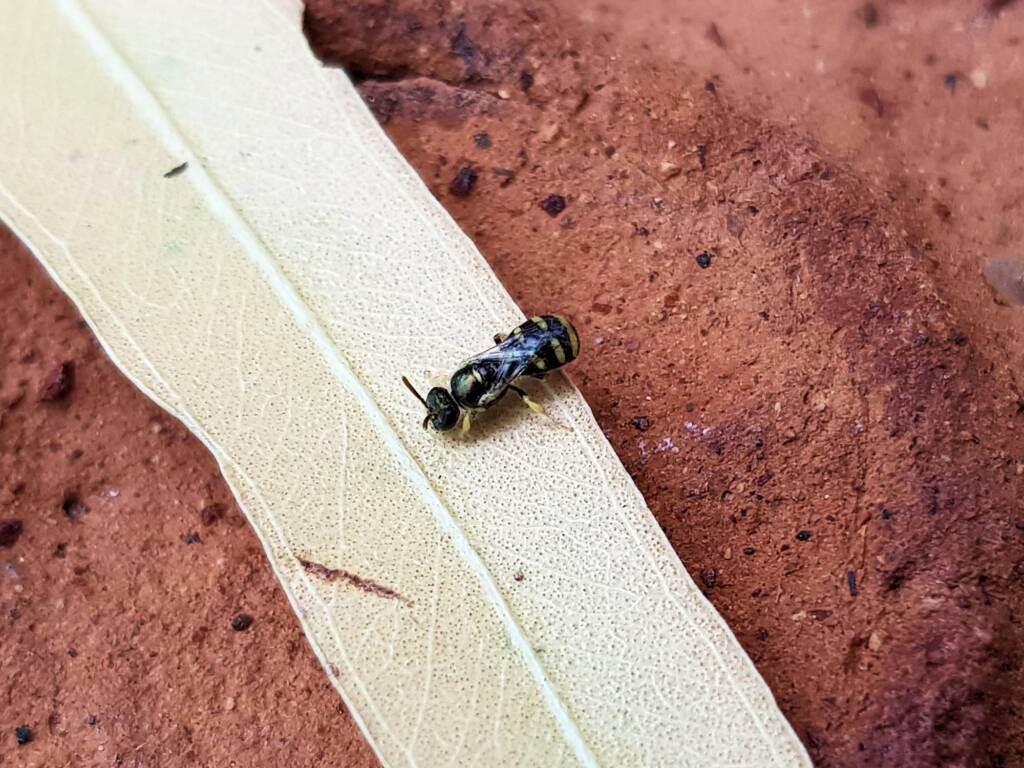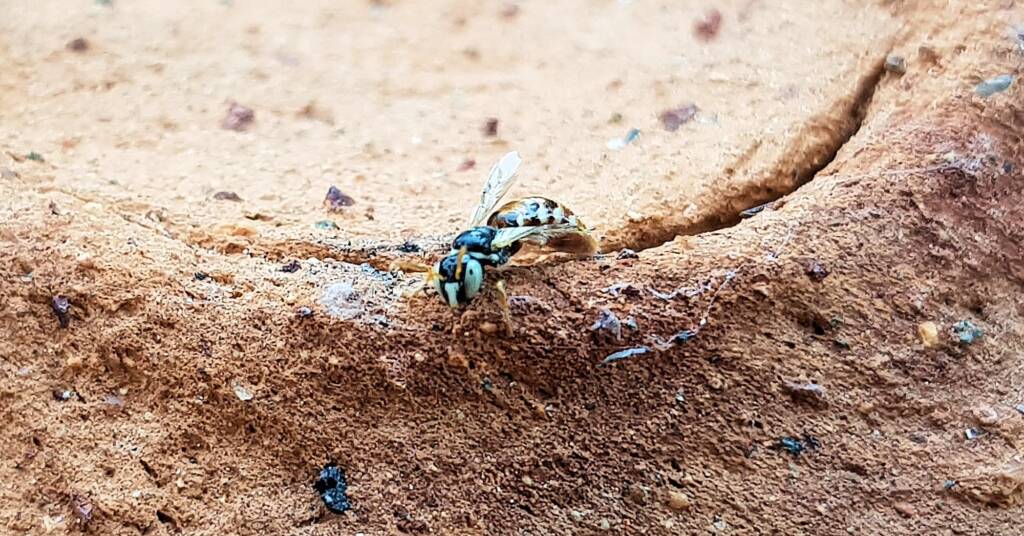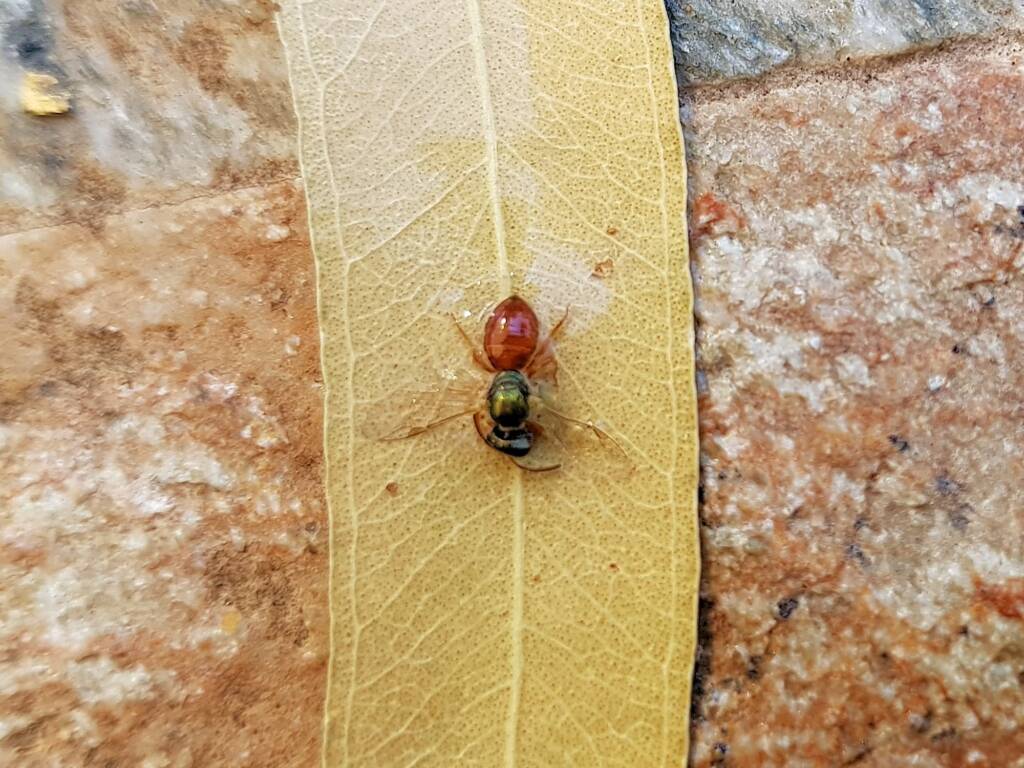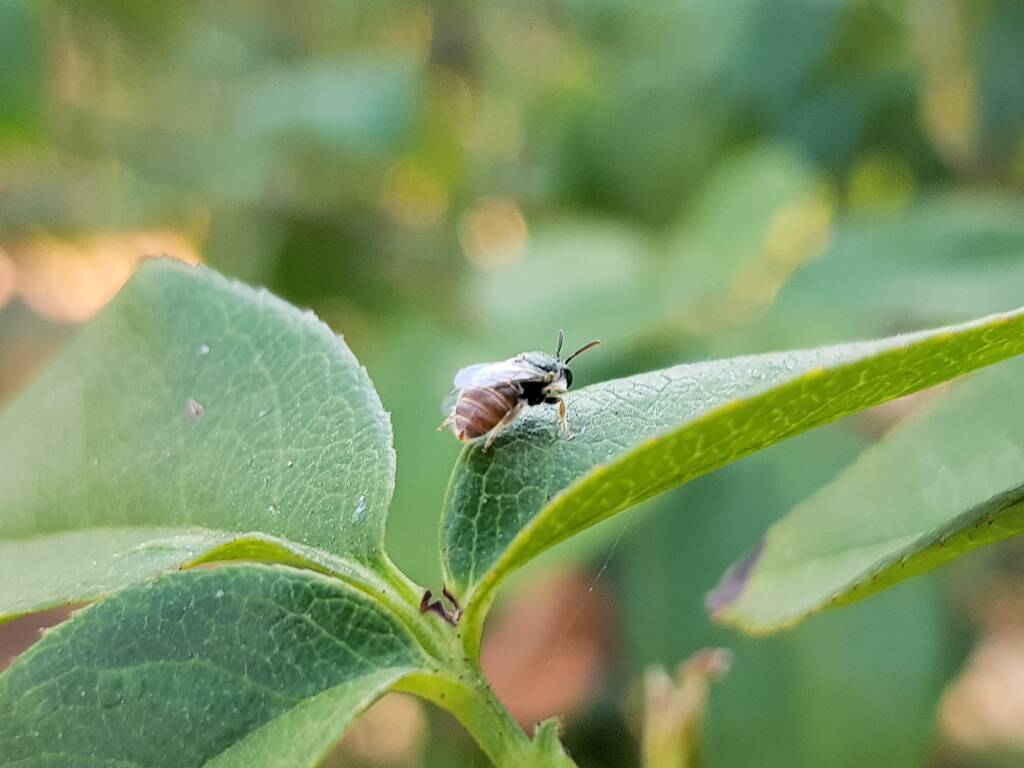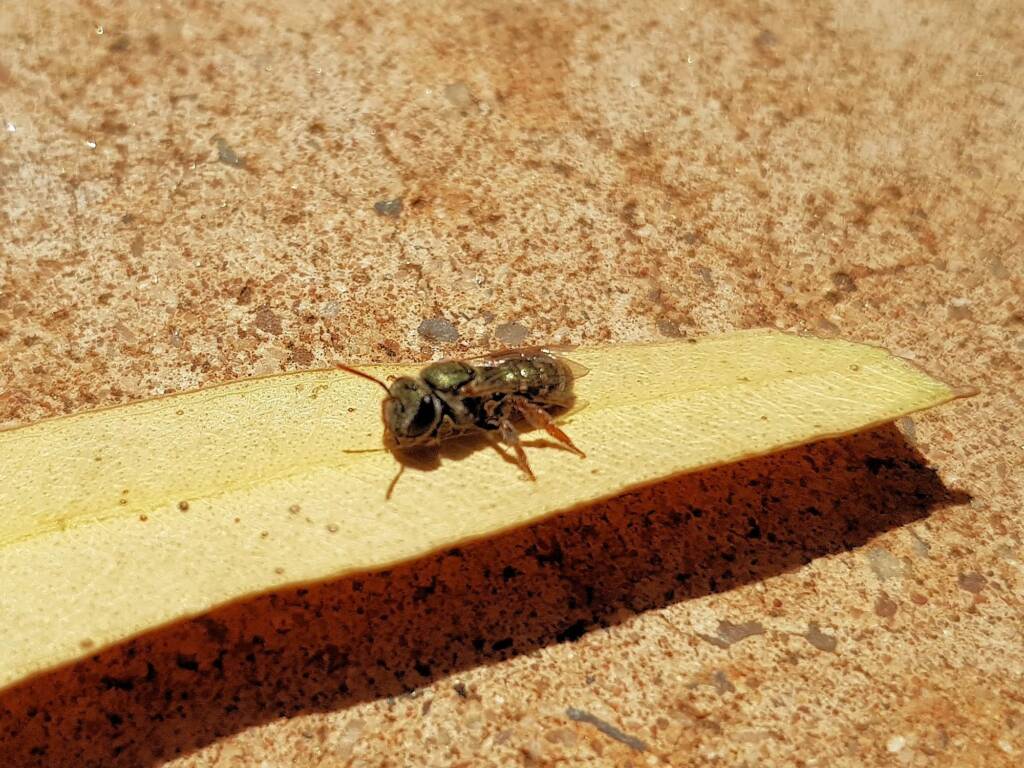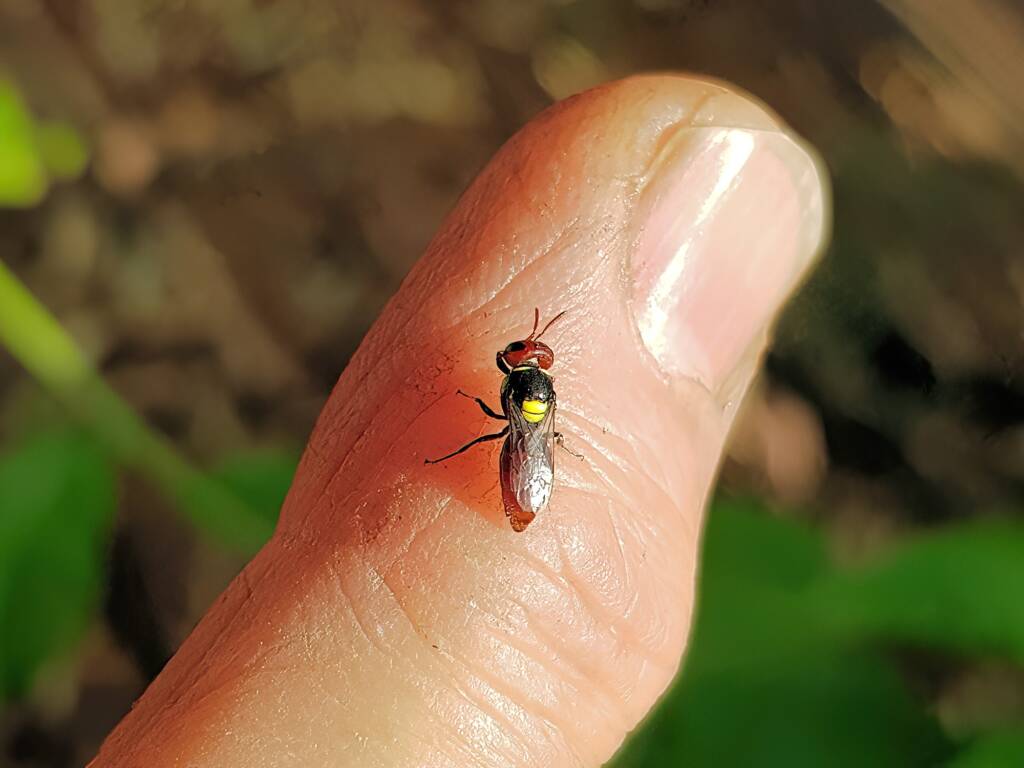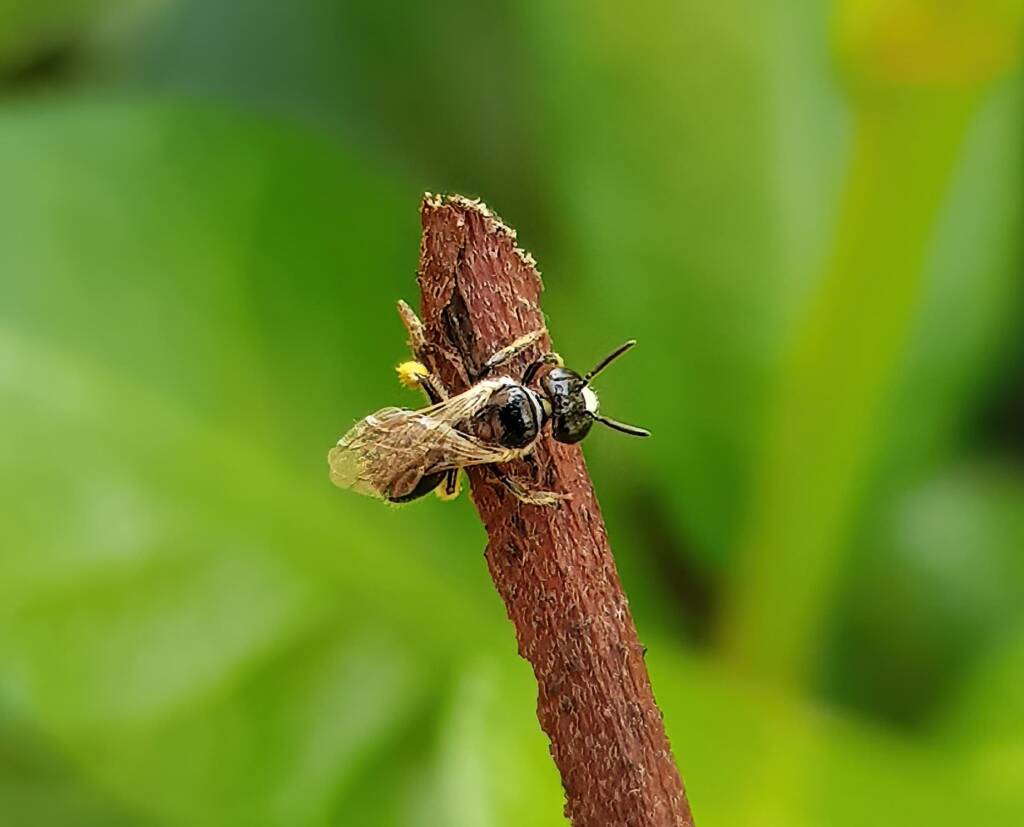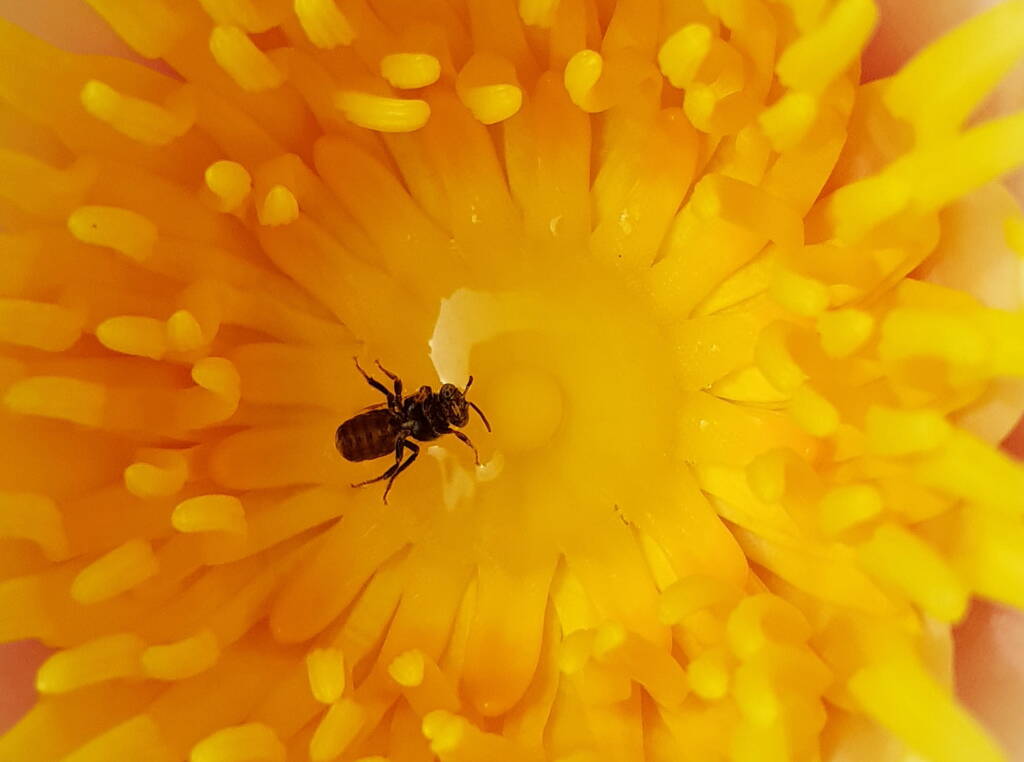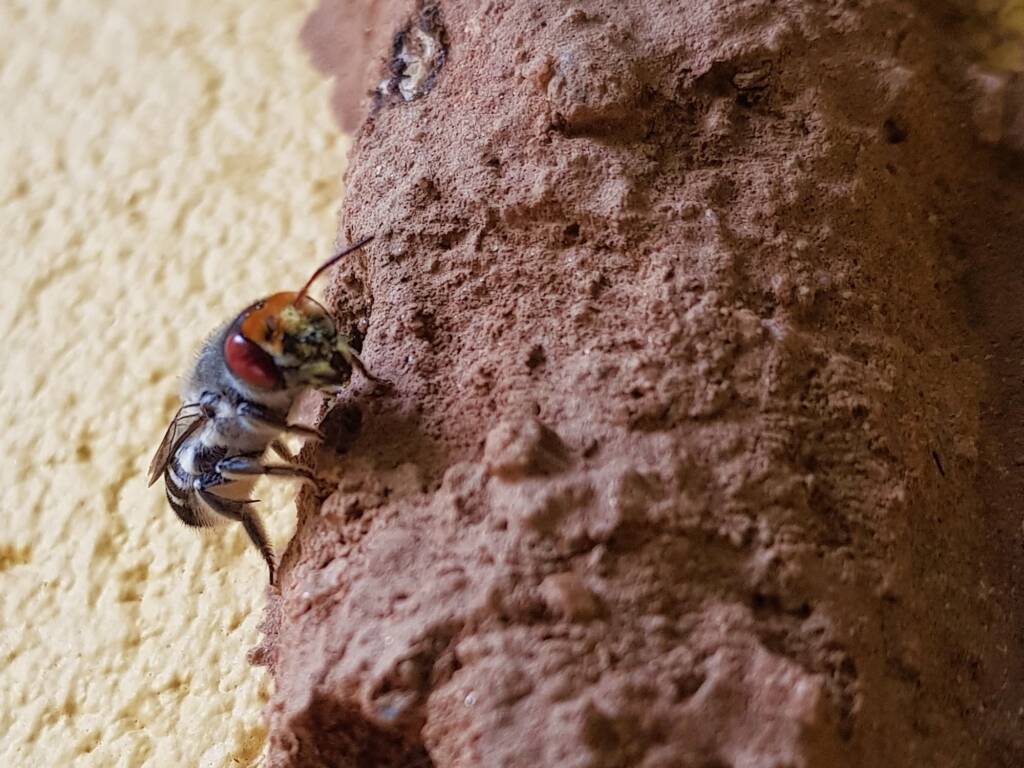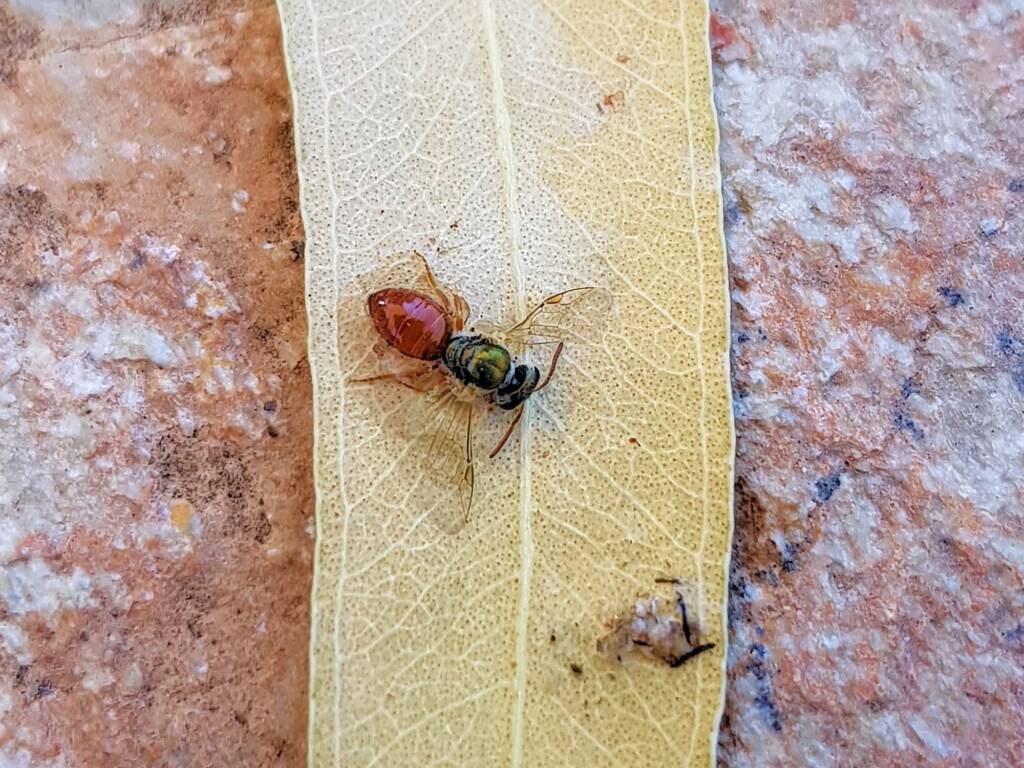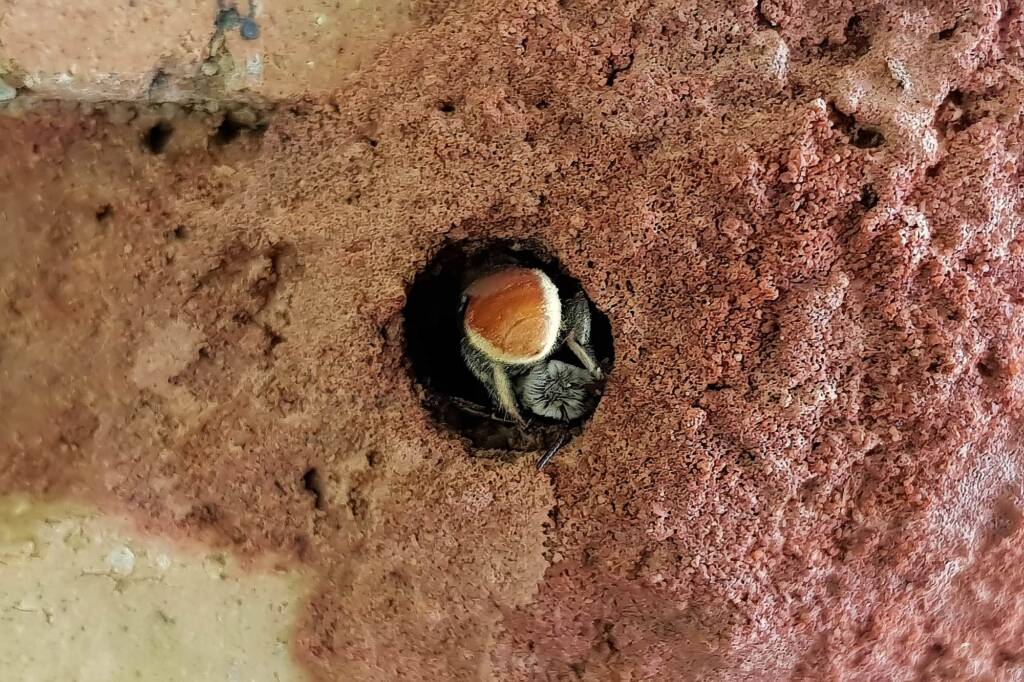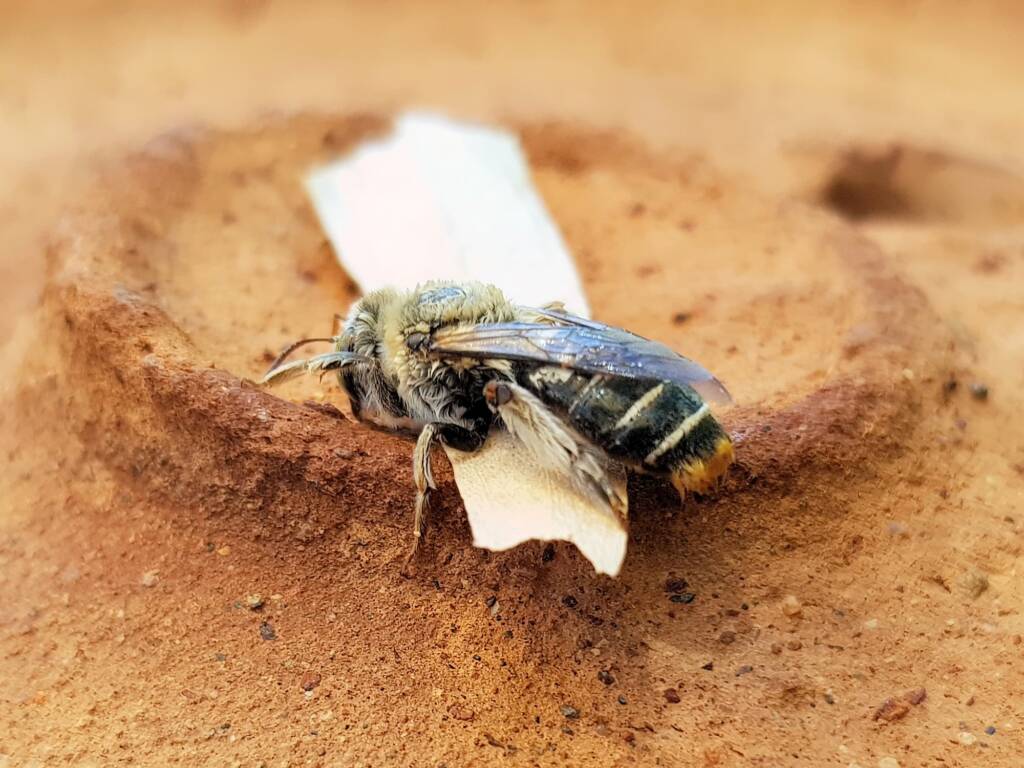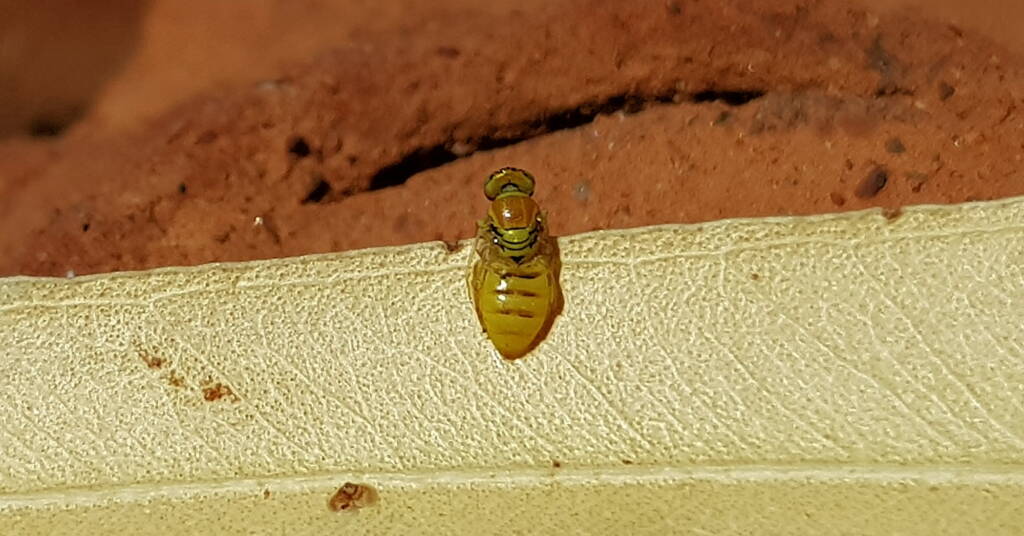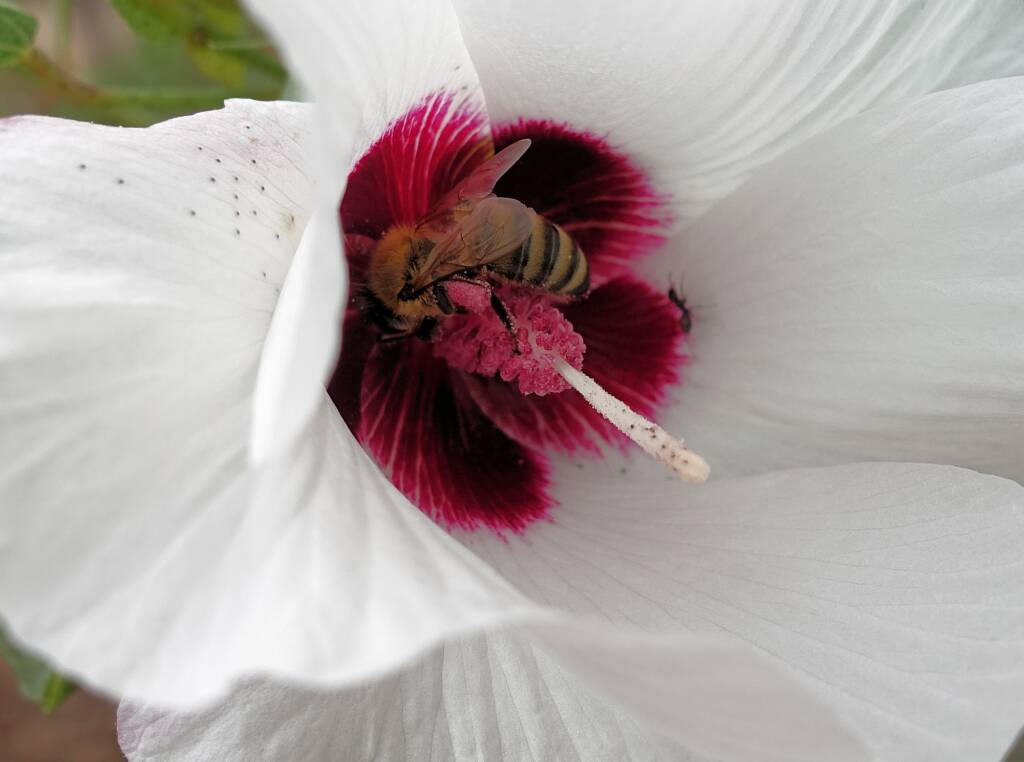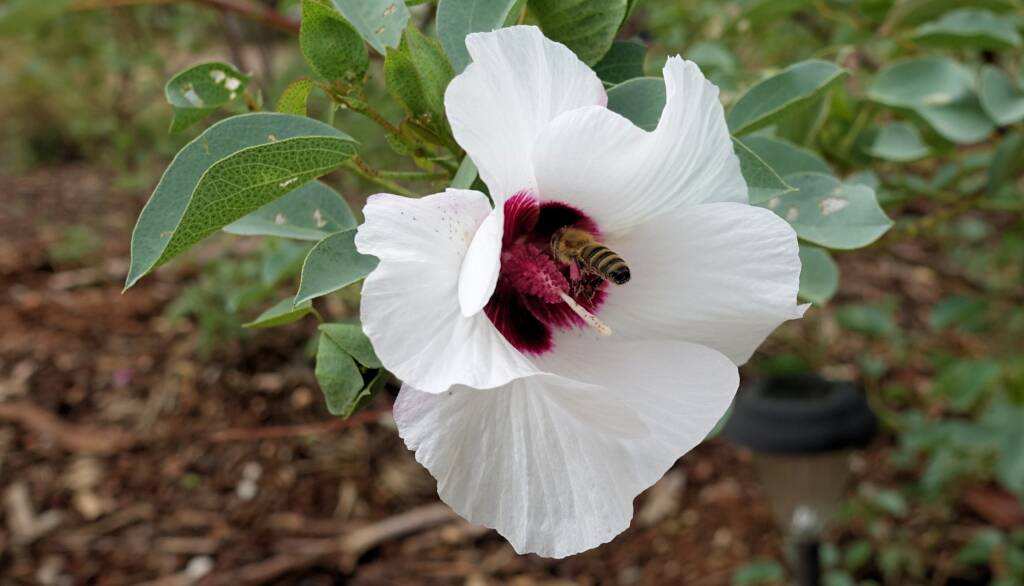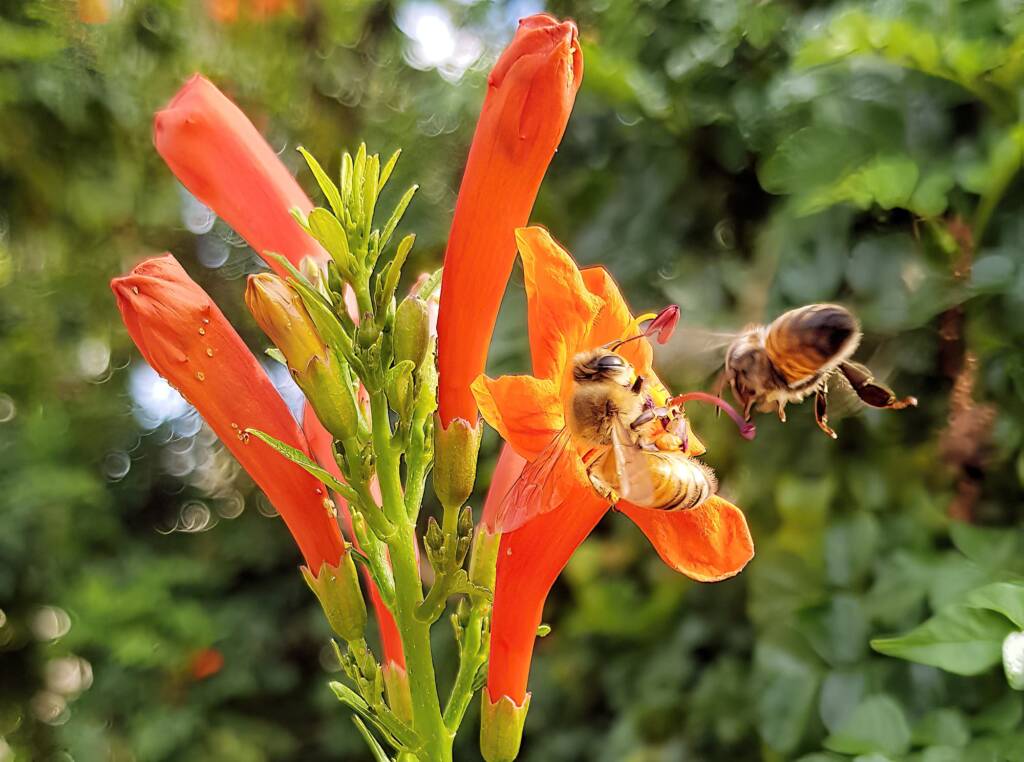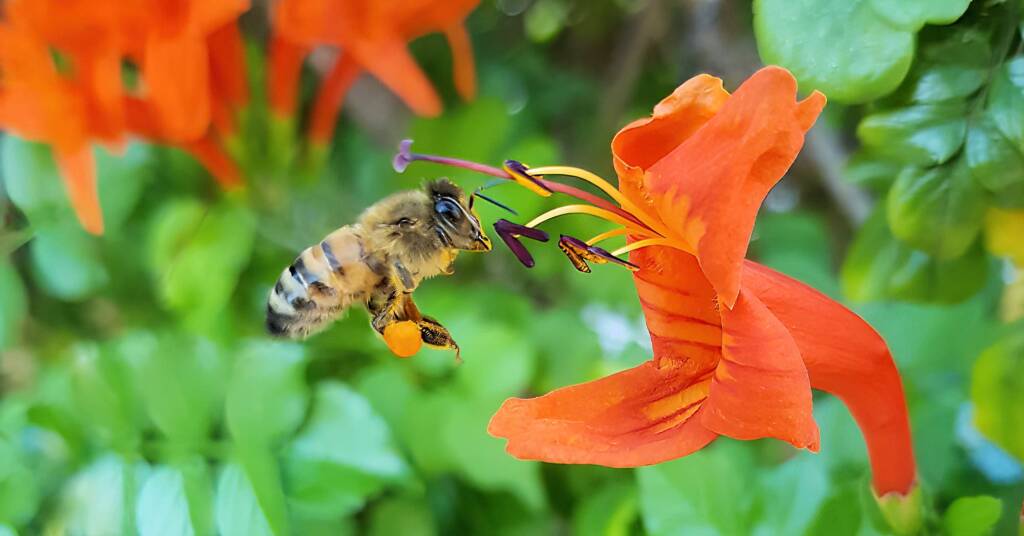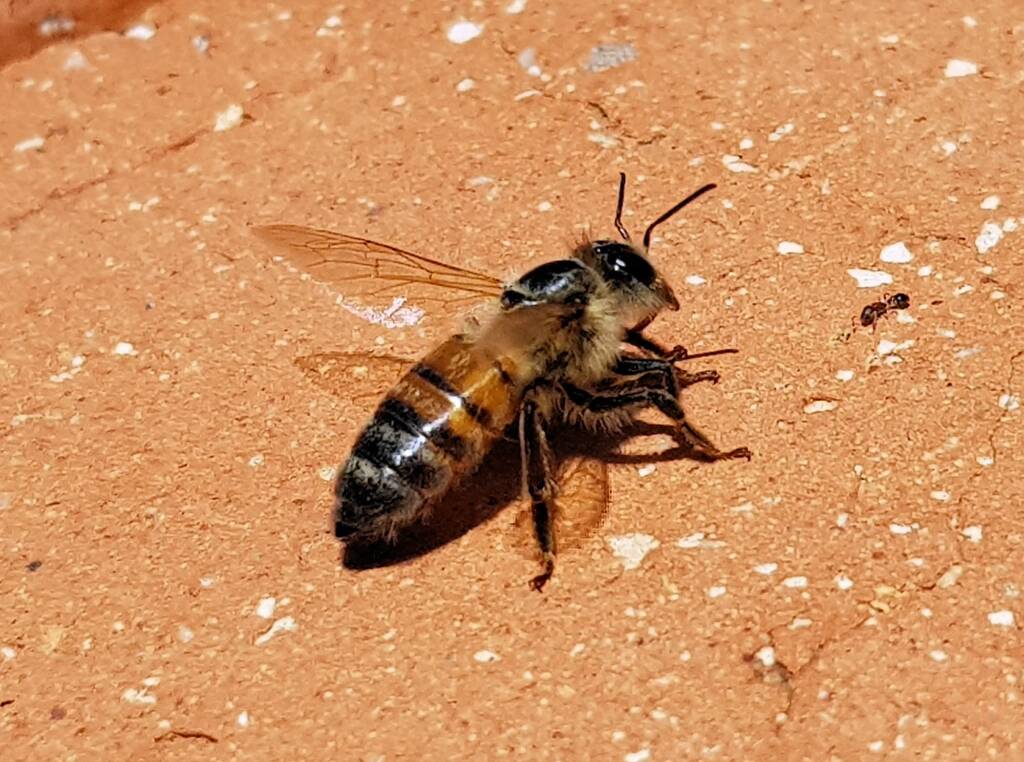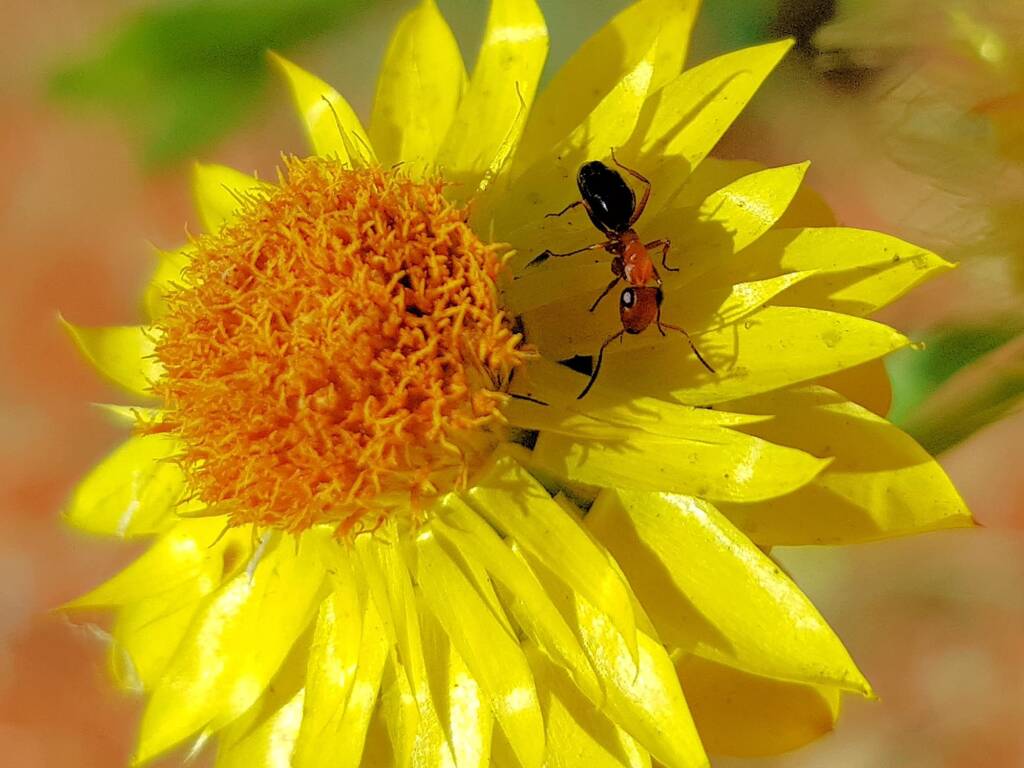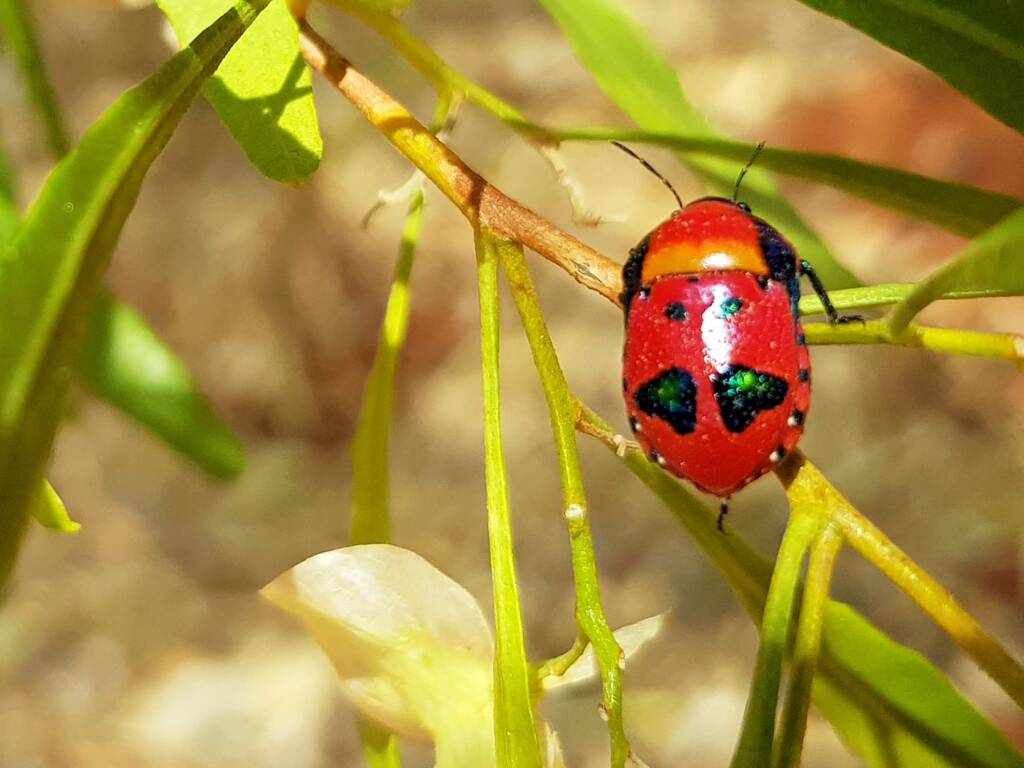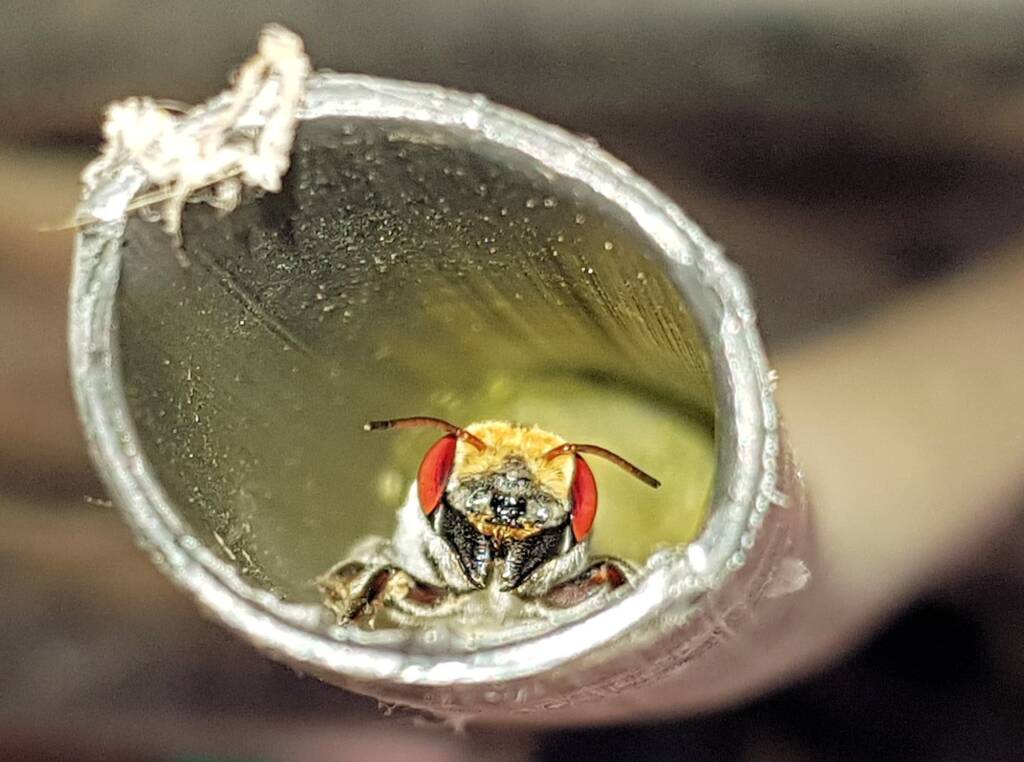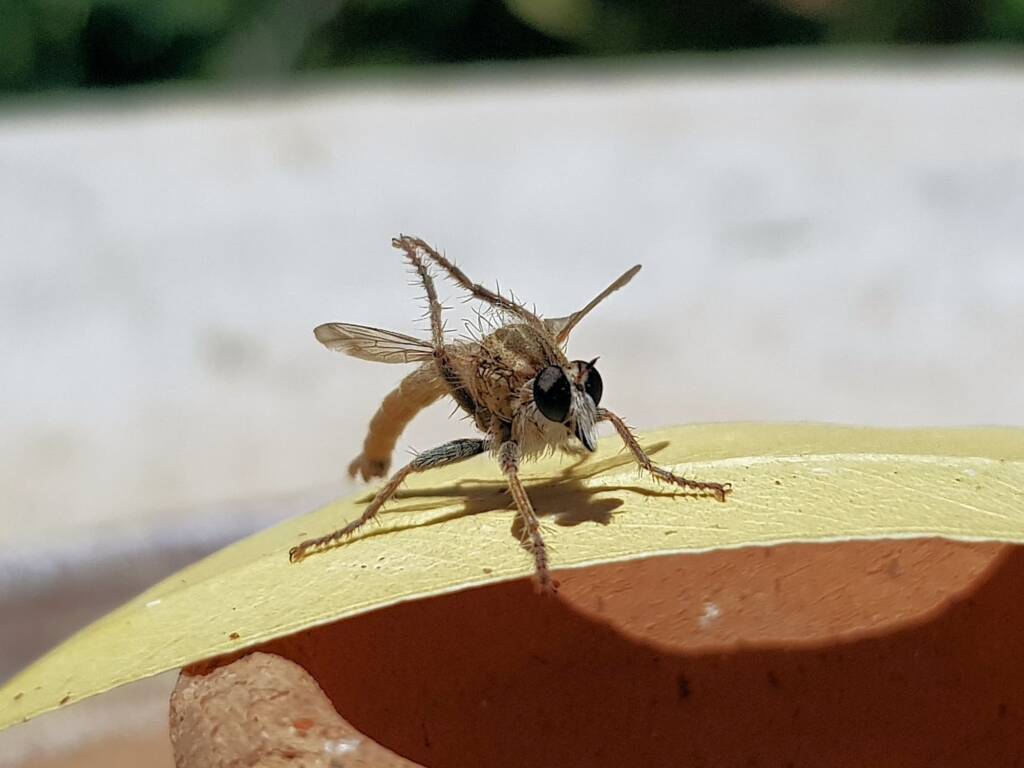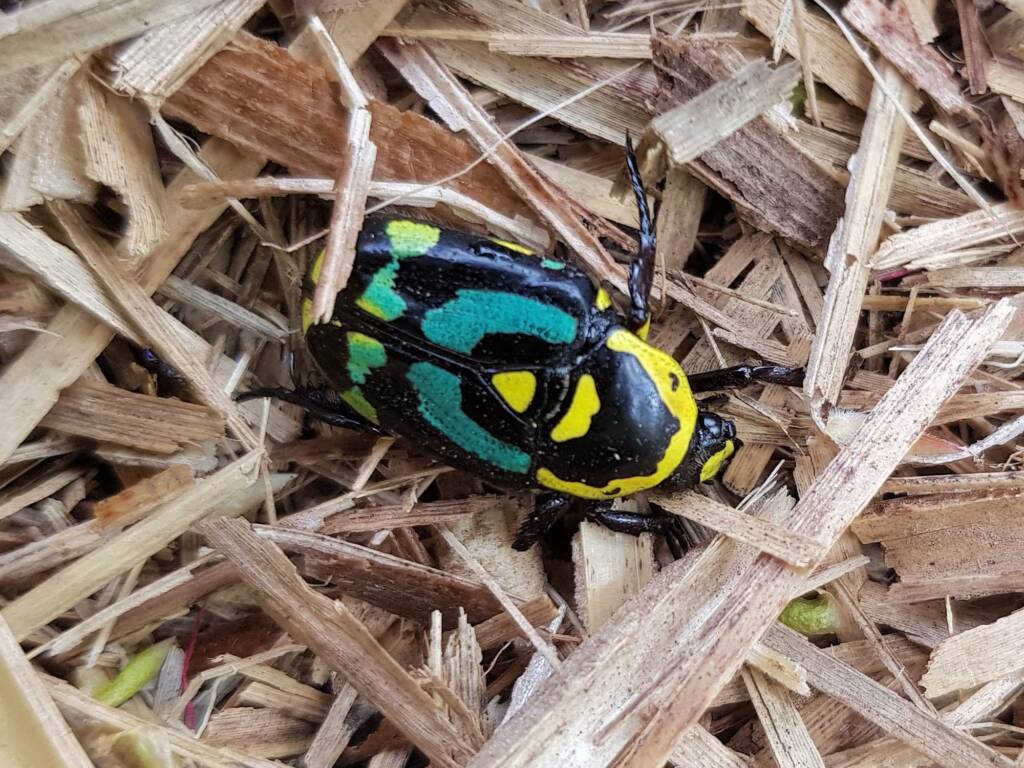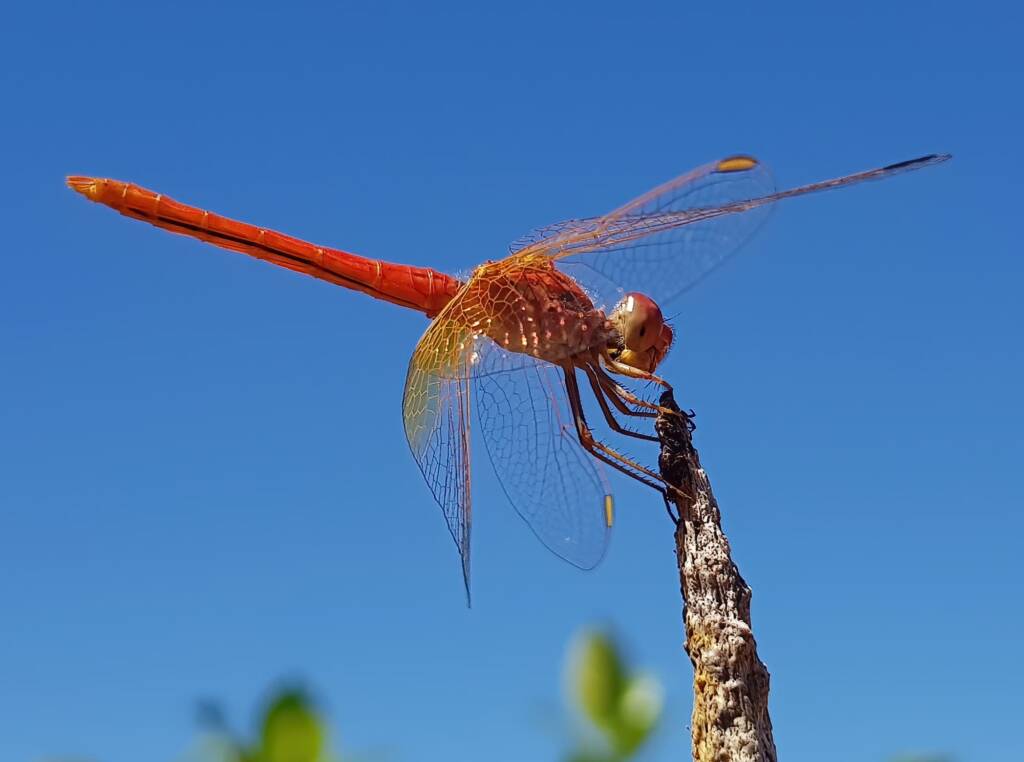Alice Springs Fauna •
Alice Springs BeesAmegilla Bee Braunsapis sp Bright-white Masked Bee Bush Bee Ceylalictus perditellus European Honey Bee Exoneurella eremophila Golden-browed Resin Bee Lasioglossum (Homalictus) Lasioglossum (Homalictus) on Eucalyptus orbifolia Lasioglossum (Homalictus) dotatum Lasioglossum (Homalictus) urbanus Lasioglossum (Parasphecodes) Lipotriches Megachile deanii Red-headed Masked Bee Stenotritidae genus Stenotritus Xanthesma (Xenohesma)
Alice Springs and Central Australia is home to a number of native bees.
Alice Springs Native Bees
The local native bee species are varied in size and colour, as well as some preferring only specific genus/species of plants. Click on the following images to see information on the listed native bees sighted here in Alice Springs.
- Blue-banded Bee (Amegilla chlorocyanea)
- Bright-white Masked Bee (Hylaeus albonitens)
- Bush Bee (Austroplebeia australis)
- Ceylalictus perditellus
- Desert Reed Bee (Exoneurella eremophila)
- Golden-browed Resin Bee (Megachile aurifrons)
- Homalictus urbanus
- Lasioglossum (Homalictus)
- Lasioglossum (Parasphecodes)
- Lipotriches
- Megachile deanii
- Red-headed Masked Bee (Hylaeus ruficeps)
- Reed Bee (Braunsapis sp)
- Stenotritidae (genus Stenotritus)
- Xanthesma (Xenohesma)
- Apis mellifera (European Honey Bee) – introduced species
The following scientific grouping/listing of the bees listed above:
- Genus Amegilla (Notomegilla)
- Genus Braunsapis
- Genus Hylaeus (Gnathoprosopis)
- Genus Austroplebeia, species Austroplebeia australis
- Genus Exoneurella, species Exoneurella eremophila
- Genus Ceylalictus, species Ceylalictus perditellus
- Genus Hylaeus (Euprosopoides), species Hylaeus ruficeps
- Genus Lasioglossum (Homalictus), species Homalictus urbanus
- Genus Lasioglossum (Homalictus)
- Genus Lasioglossum (Parasphecodes)
- Genus Lipotriches
- Genus Megachile, species Megachile aurifrons
- Genus Megachile (Rhodomegachile), species Megachile deanii
- Family Stenotritidae, genus Stenotritus
- Genus Xanthesma, subgenus Xanthesma (Xenohesma)
- Genus Apis, species Apis mellifera
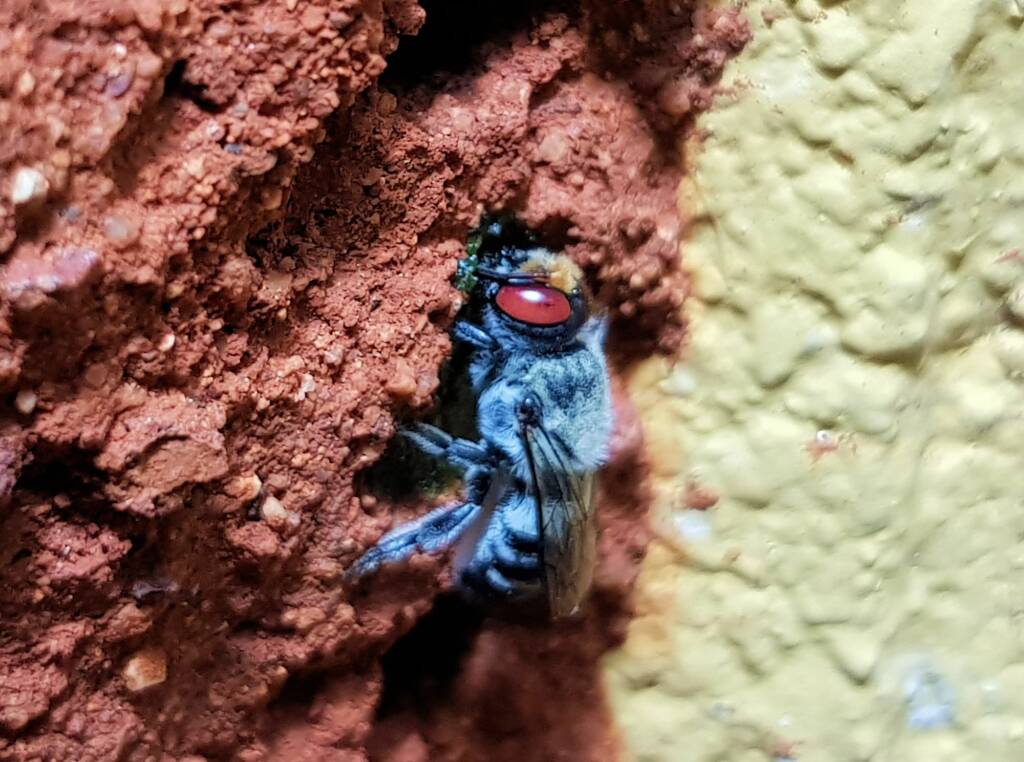
Alice Springs European Honey Bee
As well as native bees, the European Honey Bee (Apis mellifera) is a common sight in Alice Springs, used in the locally produced honey,
The European Honey Bee (also known as the Western Honey Bee) ranges in size from 13-16 mm and are usually recognised by the yellow and black abdominal banding and fine visible hairs all over the body. Their antennae are slightly longer than their head and they have light brown to transparent wings with dark veins. There may be some slight variation in colour, depending on the age of the bee (worker bees can lose their hairs over time) and also feral honey bees can be slightly darker in colour — you can read our page Dark Apis mellifera.
Most of us would be able to identify the European Honey Bee, but if you are not sure, following are some images of the European Honey Bee.
If you have seen and photographed any species of native bees here in Alice Springs and Central Australia, we would welcome your photos and where they were taken to expand our content for the benefit of all. Your name will appear as the copyright holder of the image.
You can contact us through this website and Facebook Ausemade.
- Scientific classification
- Kingdom: Animalia
- Phylum: Arthropoda
- Class: Insecta
- Order: Hymenoptera
- (unranked): Unicalcarida
- Suborder: Apocrita
- Superfamily: Apoidea
- Clade: Anthophila
- Families:
- Andrenidae
- Apidae
- Colletidae
- Halictidae
- Megachilidae
- Melittidae
- Stenotritidae
- Synonyms: Apiformes (from Latin ‘apis’)
Source: Bee, https://en.wikipedia.org/wiki/Bee (last visited Aug. 1, 2022)
- Scientific classification
- Kingdom: Animalia
- Phylum: Arthropoda
- Subphylum: Hexapoda
- Class: Insecta
- Informal: Pterygotes
- Order: Hymenoptera
- Superfamily: Apoidea
- Informal: Apiformes
- Informal: Spheciformes
Source: Apoidea, Social Bees, Atlas of Living Australia, https://bie.ala.org.au/species/https://biodiversity.org.au/afd/taxa/9424ef53-1dcb-42e3-95c8-7d0aafe8fba8
Alice Springs BeesAmegilla Bee Braunsapis sp Bright-white Masked Bee Bush Bee Ceylalictus perditellus European Honey Bee Exoneurella eremophila Golden-browed Resin Bee Lasioglossum (Homalictus) Lasioglossum (Parasphecodes) Lipotriches Megachile deanii Red-headed Masked Bee Stenotritidae genus Stenotritus Xanthesma (Xenohesma)
Alice Springs FaunaAlice Springs Native Bees Alice Springs Beetles Alice Springs Birds Alice Springs Gastropods (Gastropoda) Alice Springs Insects Alice Springs Marsupials Alice Springs Reptiles Alice Springs Spiders
Alice Springs FloraAlice Springs Flora Index Acacia ligulata Annual Yellowtop Apple Bush Bougainvillea Burdekin Plum Carob Tree (Ceratonia siliqa) Cattle Bush Desert Cotton (Aerva javanica) Desert Oak Eremophila Wildberry Feijoa sellowiana Flannel Cudweed Fork-leaf Corkwood Ghost Gum Golden Everlasting Kurrajong Lemon-flowered Gum MacDonnell’s Desert Fuchsia Native Bluebell Native Tomato Needlewood Olive Tree Perennial Yellow Top Rat’s Tail River Red Gum Inland River Red Gum Rosy Dock Round-leaved Mallee Scurvy Grass Silky Eremophila Stemodia viscosa Striped Mintbush Sturt’s Desert Pea Sturt’s Desert Rose Tangled Leschenaultia Tar Vine Weeping Bottlebrush White Cedar Yellow Billybutton Yellow-keeled Swainsona Yellow Oleander

